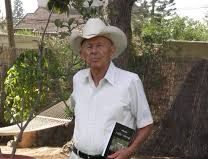J.Amir, Unla-Bow
This is a modest beginning of a moremethodical and basic investigation of the agricultural problems of Namsang.
Sowing dates
1. Examination of the water balance of wheat crops during the dry season has shown that it is possible to obtain profitable yields even under exceptionally dry conditions, such as existed in1962/63, with September sowing dates.
High yields depend first and foremost on changing the sowing date to the first week of September. This will enable the wheat crop to develop its vegetative growth up to shooting by utilizing the rains at the end of the monsoon season, and later to use up
the water reserves that have meanwhile accumulated in the soil.
2. The change of sowing date will enable better exploitation of fertilizers and the natural fertility of the top soil layer due to longer retention of soil moisture.
3. The danger of frost during the earing-flowering period will also be prevented by changing the sowing date.
4. Preceding crops: Changing the sowing date of the wheat crop necessitates a preceding summer crop that will leave the field free at the end of August. The most suitable crops in Namsang at present are soya, short-term Kenaf, ground nuts sown in the beginning of May, or green manure, if proved advantageous by experiments.
5Fertility and manuring: The response to mineral fertilizers and to any other source of nutrients is very marked in Namsang soil. At the research station, where the level of soil fertility is higher than in the surrounding villages, the response to fertilization was also good. It is to be supposed, therefore, that in
the villages the response will be even greater. However, the key to efficient exploitation of fertilizers is moisture in the top soil layer.
Observations made at the research station and in the villages have shown that the application of organic manure is desirable under Namsang conditions. However, it should be applied to crops grown during the monsoon season and not directly to the wheat, which responds well to its residual effect also, even if it is the third crop in rotation after the organic manure application.
6. Liming and pH: Response to lime was only noticed in those areas where the pH was between 5.0 and 6.0. In such cases application of lime very often doubled the yield. In areas with a pH value above 6.0, there was no response to liming. The pH values in the villages should therefore be thoroughly tested, so that lime will not be uselessly applied. In many instances we found pH values in the fields of villages 2 and 4 to be even higher than pH 6.0.
7.. Variety: At our present stage o:f knowledge the best variety that we have is Nanta 2419, which is rust-resistant and has a high potential yield.
The results o:f this study point to the possibility o:f growing wheat with considerable success in the Namsang region. It is a relatively easy crop to grow and moderate yields give an income equal to that :from ground nuts, which is the present cash crop.
The exploitation o:f the :fields in the dry season enables the :farmers
to grow two crops per year, thereby increasing their income considerably.
Amir, J. and Bow, Unla (1963). Studies on wheat growing problems in
Namsang Burma. Special Bull., Not. Univ. Inst. Agric., Rehovot.
